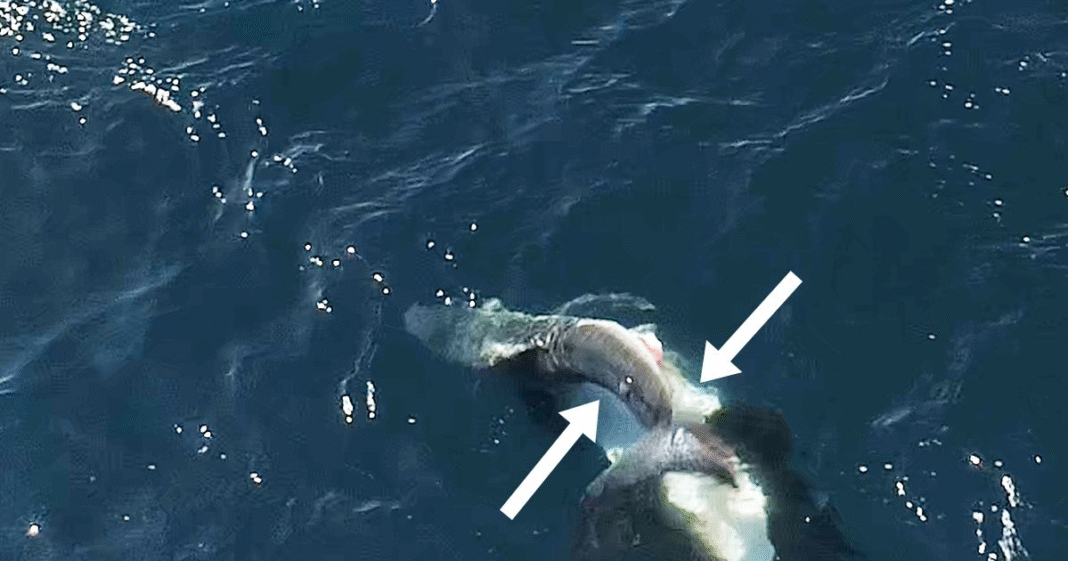Orcas in the Gulf of California off the coast of Mexico have been spotted hunting young great white sharks by flipping them over to incapacitate them before eating their energy-filled liver, new research videos show. The research, released on Sunday, suggests that this pod of orcas specializes in hunting sharks.
Great white sharks have only one known natural predator in the ocean: the orca, or killer whale. However, there has only been one known recorded instance, in South Africa in 2022, of the animals preying on juvenile great white sharks, until now.
Erick Higuera, an independent marine biologist in Mexico, captured aerial footage of a pod of five orcas in the Gulf of California hunting three great white sharks on two separate occasions.
In the first recorded hunt, which took place in August 2020, a group of five female orcas worked together to push the young great white shark to the surface and turn it over.
Jesús Erick Higuera Rivas
Turning a shark upside down induces a state called tonic immobility, which essentially paralyzes the shark after altering its awareness of its surroundings.
“This temporary state renders the shark defenseless, allowing the orcas to extract its nutrient-rich liver and likely consume other organs as well, before abandoning the rest of the carcass,” Higuera said in a press release.
The orcas then took it underwater and reappeared with the shark’s liver in their mouths. Shortly after, the killer whales did the same with a second juvenile great white shark.
In August 2022, the research team recorded a similar pattern – five orcas pushing a juvenile shark onto its back and up to the surface. The orcas were seen eating the shark’s liver.
Jesús Erick Higuera Rivas
“This behavior is a testament to orcas’ advanced intelligence, strategic thinking, and sophisticated social learning, as the hunting techniques are passed down through generations within their pods,” Higuera said.
According to the study, researchers identified some of the orcas in the first incident as those previously spotted hunting other species like whale sharks and bull sharks. However, the footage in the second hunt wasn’t clear enough to determine if those orcas belonged to the same pod.
California State University’s Dr. Salvador Jorgensen, one of the authors in the study, said these hunting incidents are the first time researchers have seen orcas repeatedly target juvenile white sharks.
“Adult white sharks react quickly to hunting orcas, completely evacuating their seasonal gathering areas and not returning for months,” he said in a press release. “But these juvenile white sharks may be naive to orcas. We just don’t know yet whether white shark anti-predator flight responses are instinctual or need to be learned.”
Researchers suggested that while this is the only pod that has been observed hunting elasmobranchs, there could be more.
“Generating information about the extraordinary feeding behavior of killer whales in this region will lead us to understand where their main critical habitats are, so we can create protected areas and apply management plans to mitigate human impact,” Dr. Francesca Pancaldi of the Instituto Politécnico Nacional Centro Interdisciplinario de Ciencias Marinas said.
In the 2022 instance in South Africa, a pod of orcas was seen chasing sharks during an hourlong pursuit off Mossel Bay, a port town in the southern Western Cape province.




